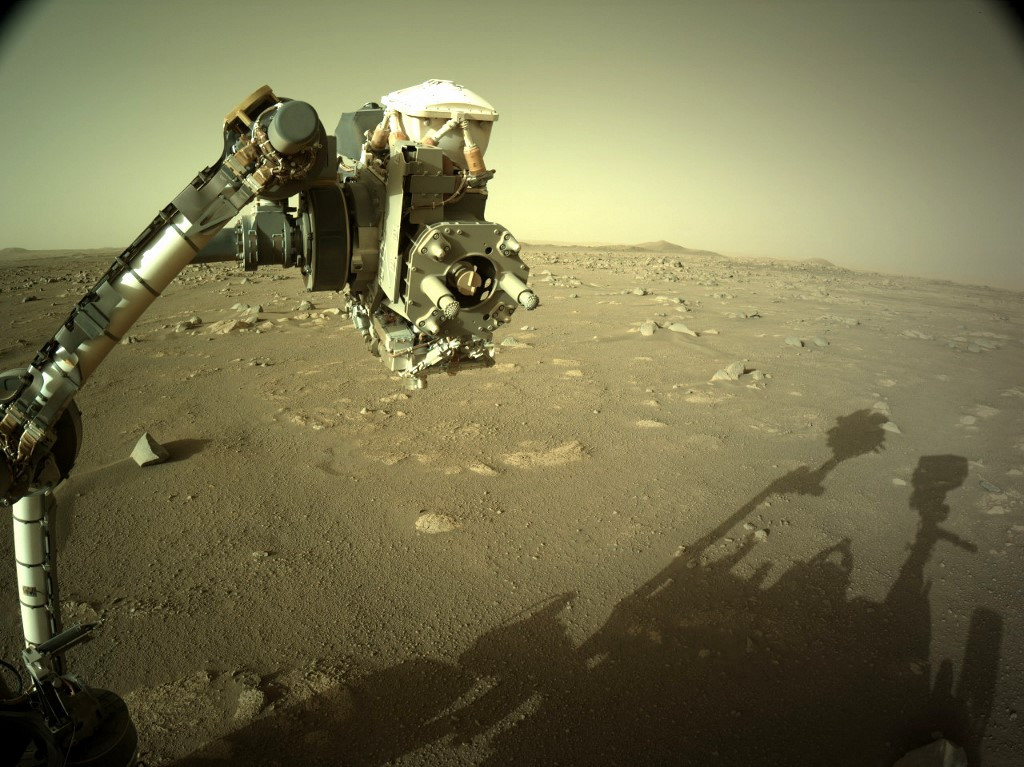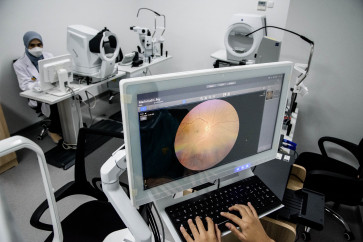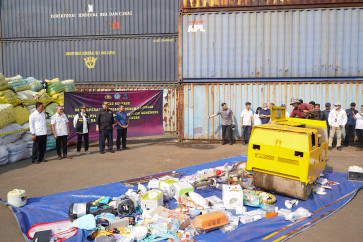NASA Mars rover fails to collect rock in search of alien life
The US space agency published images Friday of a small mound with a hole in its center next to the rover -- the first ever dug into the Red Planet by a robot.
Change Size
 This NASA handout shows an image acquired on March 9, 2021 by NASA's Mars Perseverance rover using its onboard Left Navigation Camera (Navcam). (Agence France Presse/NASA)
This NASA handout shows an image acquired on March 9, 2021 by NASA's Mars Perseverance rover using its onboard Left Navigation Camera (Navcam). (Agence France Presse/NASA)
N
ASA's Perseverance drilled into the surface of Mars but failed in its initial attempt to collect rock samples that would be picked up by future missions for analysis by scientists on Earth.
The US space agency published images Friday of a small mound with a hole in its center next to the rover -- the first ever dug into the Red Planet by a robot.
But data sent to Earth by the rover after its first attempt to collect a sample and seal it in a tube indicated no rock had been gathered.
"While this is not the 'hole-in-one' we hoped for, there is always risk with breaking new ground," said Thomas Zurbuchen, associate administrator for NASA's science mission directorate, in a statement.
"I'm confident we have the right team working this, and we will persevere toward a solution to ensure future success."
The drill hole is the first step of a sampling process that is expected to take about 11 days, with the aim of looking for signs of ancient microbial life that may have been preserved in ancient lakebed deposits.
Scientists also hope to better understand Martian geology.
The mission took off from Florida a little over a year ago and Perseverance, which is the size of a large family car, landed on February 18 in the Jezero Crater.
Scientists believe the crater contained a deep lake 3.5 billion years ago, where the conditions may have been able to support extraterrestrial life.
NASA plans a mission to bring around 30 samples back to Earth in the 2030s, to be analyzed by instruments that are much more sophisticated than those that can be brought to Mars at present.









